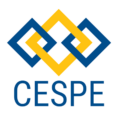About this Webinar:
During this webinar, Bart Rimez our expert in Crystallization, demonstrated how the Secoya Crystallization Technology (SCT) process can be seamlessly scaled up from laboratory to production scale by tightly controlling various parameters.
At the laboratory scale, a set of parameters is identified and enables the production of the desired particle sizes and distributions. This same set of parameters can then be directly transferred to pilot-scale or production-scale processes, thus providing a reliable and efficient means of scaling up the SCT process.
Speakers:
Bart Rimez, PhD | Co-owner And Technology Lead at Secoya Technologies
Diala Youssevitch | Technical Sales Manager
Invited speaker: Jan Vogeleer | Managing Director, Fette Compacting
Questions asked during this webinar
Regulatory embodiments like EMA and FDA will not be able to approve nor to disapprove our industrial skid, as they base their analysis on the robustness of a production process with the data provided on a specific compound or production. They will require this data not only while running stable, but also on the boundary batches, etc. All this necessary data can be gathered using the SCT-LAB and SCT-PILOT as the scale at which the process is executed is not changed in between the different clinical trial stages and the final commercialization from the LAB scale over the PILOT to production scale. Therefore, a lot of data can already be specified during the construction of the application file using low quantities of product: for the total LAB testing we use typically a maximum of about 20-100 g (depending on solubilities!!), a value that can be reduced when recycling is considered between tests.
We did collaborate during the development of the different units only with trusted partners experienced in the field: clean piping companies for fluidics, hardware components only from renowned companies with the right documentation, software and automation development only with a company experienced with cGMP procedures, implementation of a quality system, etc. We are therefore confident that for the construction part of the industrial production unit, besides classic IQ OQ PQ trajectories, we are able to supply state-of-the-art machines, and that the data can be generated on these machines to construct the final application file for the authorities.
We have a written protocol for the first test you perform on a new molecules, separated in an cooling or antisolvent approach. This easy protocol guides you through the first tests and helps selecting reactor size, nucleation temperature, and results in the determination of the type of crystals obtained, metastable zonewidth estimation, occurrence of oiling out under some conditions, etc. Once this is mapped, a second series of tests look at the thermodynamics of the system in a more profound way, and one tries to look at the influence of certain parameters on the eventual particle size and any other important feature. Then, using advanced hydrodynamics further control of particle size can be studied if needed.
A proof of concept for a new molecule is split into two parts. The first part is demonstrate the possibility to crystallize the compound using our technology and to gain a first insight in crystal form and what parameters are important in changing the crystalline size. This takes one week of work for setting up the experiments and analysis of provided data (like actual crystallization process data), performing two sets of tests, analysis of conducted tests, and reporting. The second part of a POC is then used to focus on the desired particle size that has to be obtained, and to set up a crystal growth and isolation strategy, as well as first insights in possible yields to help with production rates analysis. This takes between one and two months of calendar time.
Yes, without a doubt. Most compounds do need antisolvent crystallization inside of the reactors for this, with some exceptions. We reached for example for Aspirin these values with cooling crystallization only, but for other examples like Paracetamol, Brivaracetam, steroid compounds for inhalation, etc. we reached these values and below that. At least one customer is also reaching these values for an injectable compound.
This is determined by kinetics like e.g. impact of mixing on particle size, but also on the coagulation of small particles: some particles resist better than others to small sizes. Especially if some formulation needs to be executed later on in the production process of the drug product. Then the use of surfactants is necessary. Therefore for some molecules we obtain about 3-4 µm in size without the use of surfactants whereas adding some surfactant result in sizes below 1 µm; at identical mixing conditions.
Indeed, we look at spherical agglomeration but using the emulsification approach on the Raydrop platform for controlled emulsification. This kind of emulsions are not accessible on the SCT-LAB platform, yet at least. We are currently working on benzoic acid as model compound, but there might be better suited molecules as benzoic acid is not really a compound that generates pure needles. So any input regarding a low soluble molecule inside a pure solvent is welcome.
Yes, we are. Depending on the crystal growth kinetics, compounds may indeed be continuously isolated and dried. We have good contacts with different possible partners for the following continuous isolation methodologies:
1.) Nutsche cells: can be applicable when the crystals are not affected by residence times
2.) Index belt filter: displaced belts are ideal for true continuous operations and they exist in a wide variety of sizes, with full continued cleaning of filter cloth included. Can also be used with PAT. Seems ideal for larger compounds (OSD mainly)
3.) Candle filters: work like Nutsche cells mainly but with more flexibility to discharge, clean, and pre-drying. Also, exist with single-use bags. Have also good performance down to 4-5 µm particle size
4.) Rotating drum filters: large flexibility in executions and sizes, also already available in the pharma market.

